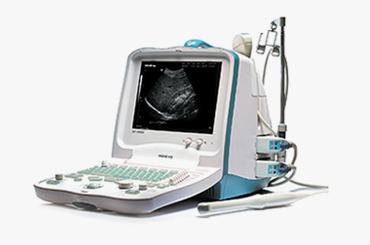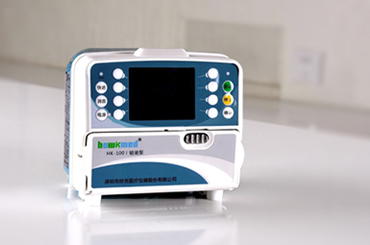-
What is the minimum voltage for an AA battery?
-
How do you use a voltmeter to check an AA battery?
-
At what voltage are AA batteries considered dead?
What voltage is too low for an AA battery? Minimum voltage, voltmeter and aging
Sep 04, 2020 Pageview:79947
AA batteries are one of the most common types of swappable power cells in circulation today. They are what we picture when we are looking for common, replaceable batteries of classic size and shape. They are often used in single cell devices or combined into pairs and fro powering portable electronics. They are available anywhere and everywhere and the most widely used type of batteries at every household. There are different types of AA batteries and the original disposable alkaline AA batteries are widely available.
What is the minimum voltage for an AA battery?
The common disposable AA batteries have a starting voltage of 1.5 V. There are different versions of AA batteries. Rechargeable AA batteries are very common these days and the advantageous replacement for as they allow convenience and long-term usage. They are sold in multiples of two or four with a charger and they can be recharged. A standard AA lithium (non-ion) battery is not intended to be rechargeable but they are powerful and very long-lasting cell type.?Lithium AA batteries?are perfect for more robust shorter-term use in high-drain equipment such as digital cameras, or even better in low-drain devices that need to be powered on for very long periods of time like smoke alarms. AA lithium cells have a shelf life of up to 9 years, and last longer than most other AA types. They also have very low leakage problems with lithium ion batteries.
The most standard are the AA alkaline batteries that are sold almost everywhere and used in all low powered devices. Wall clocks, flashlights, cordless phones, TV remotes, AC remotes, games and toys, handheld kitchen gadgets, fashionable lights all work on this type of batteries. The alkaline chemistry behind these batteries makes them cheap and easily affordable. The advantage of these batteries is that it is very easily available and cheap and ideal for such devices at your home. However, these batteries may leak with time and also may slowly discharge if lying around for a while. Rechargeable AA batteries are also available and can be used instead of standard alkaline batteries, however, they are also not recommended for they may be non-chargeable after so many drains.
How do you use a voltmeter to check an AA battery?
You may check the voltage of an AA battery by using a voltmeter. The basic fact to remember before you check the battery is that the proper voltage for AA/AAA alkaline battery is 1.5V and the proper voltage for AA rechargeable battery is 1.25 Volts. To test the battery, turn on your voltmeter, put it on DCV and make sure that it is far above the battery voltage. Mostly the voltmeter is set on "20" in the DCV area.?
With the battery in front of you, you have to put the red probe to battery's (+) end and the black probe to the battery's flat side (-) end. This will give you a reading on the voltmeter.
If the reading is more than 1.3V for alkaline battery (not rechargeable battery) then the battery still has some juice left in it. Otherwise, you have to discard off.
At what voltage are AA batteries considered dead?
End voltage is the amount voltage within the cell where it is considered to be depleted. Once this remaining amount of voltage within the battery cell is lost, it will lose its ability to store charge. Then the deterioration of the cell begins.
Most electronic devices are designed to have a specific amount of voltage that causes it to fail. The range of this amount of voltage for portable devices is typically between?1.0 volts to 1.1 volts?and can even go down to?0.9 volts. When the devices have lower amounts of end voltage, it allows them to operate for a longer time. Disposable batteries are provided with a discharge curve against time rather than the Amp hours. A regular AA battery is a an alkaline battery has a 1.5 nominal voltage charge, but when it is fresh or brand new, it will have?1.65 volts. That is the full capacity of an alkaline battery but when it reach about?1.4 volts, it will be considered dead.
In the case of rechargeable batteries, its nominal voltage will be at?1.2 volts?and when it is at its fully-charged state it will have a maximum charge of?1.65 volts. Rechargeable batteries like this are considered dead if they reach their 100% depth of charge, their voltage at this point will measure less than?1.2 volts.
The average maximum voltage of AA batteries are set to be?1.65 volts?regardless if the battery is disposable or rechargeable. End voltage will depend on the chemistry along with the device they are used for. So, the end voltage depends on several factors.
Battery technology has seen rapid advancements in recent years. Batteries have been made for our fast paced, portable world. This age would pave the path for more advanced and longer lasting batteries that are compact and powerful.
Every battery has a particular voltage where it is active and then as it discharges to reach an end voltage, it becomes dead. Some batteries are rechargeable but only for as many times and eventually are dead after multiple drainage. The Voltage of AA batteries can be measured with a voltmeter and these batteries are particularly useful for portable devices so they must power for a long time. The development of compact batteries that will last longer is under way and should be in the market. The shelf life of such batteries are also improved and it mainly depends on the chemicals used for their making. Long lasting AA batteries are high will be high on demand as AA batteries are the most common, used in every household for its cheap and easy availability. They are also compatible with maximum devices such as remote controls, toys and devices. They simply make life easy.
Leave Message
Hottest Categories
-
Hottest Industry News
-
Latest Industry News











